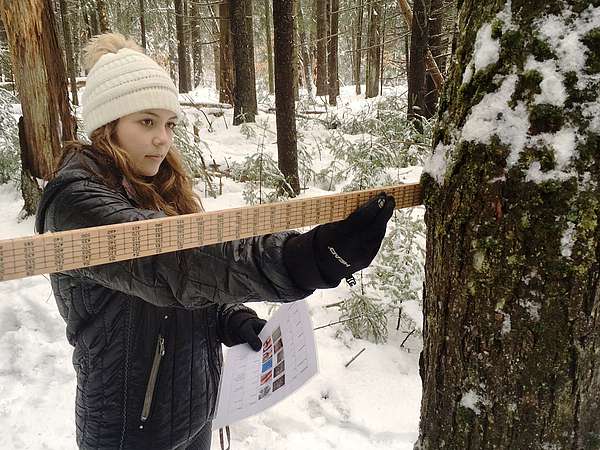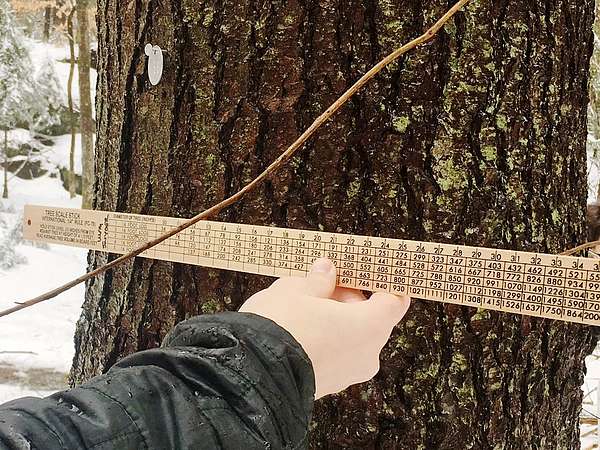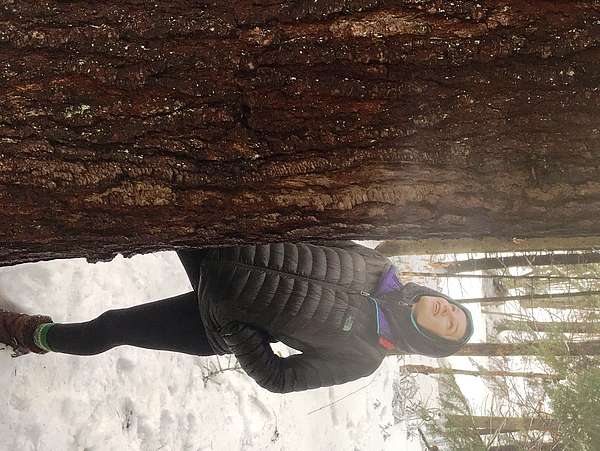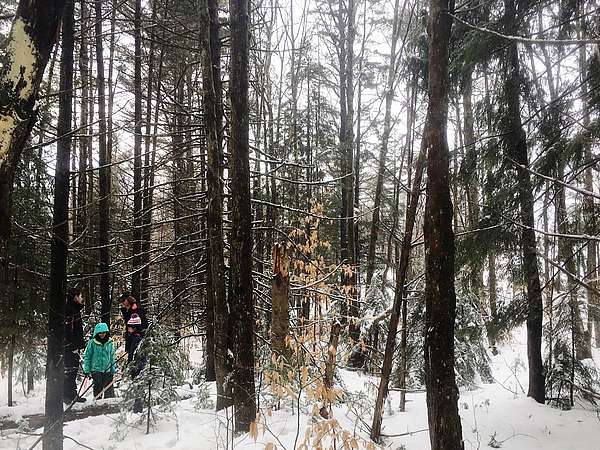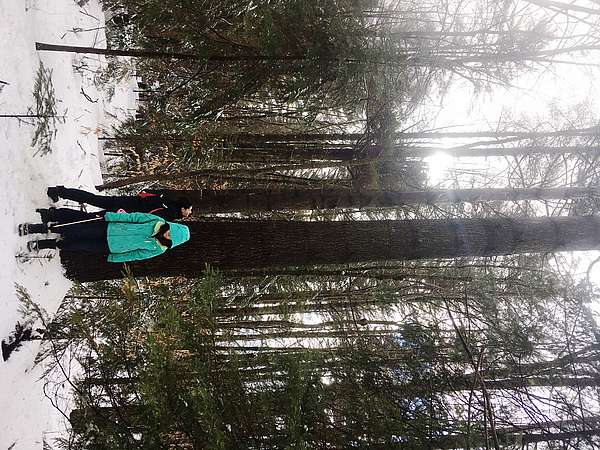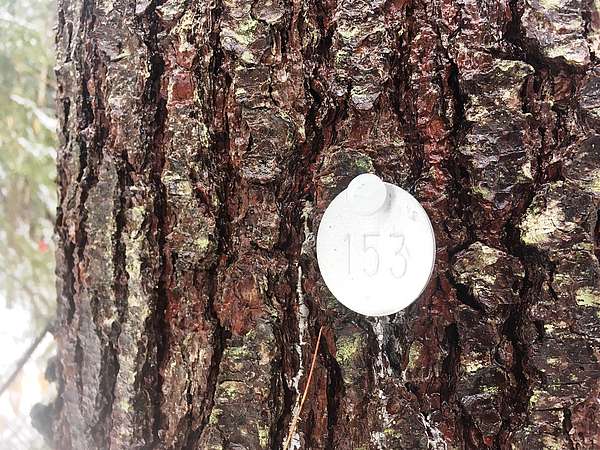This week, Wiessner Woods again became an outdoor classroom.
Stowe High School students from Don McDowell’s AP Environmental Science class revisited a section of forest on the property first studied by the same class two years ago.The goal: track changes in the forest by taking measurements and observations at permanent plots established in 2015. How much has tree size, species mix, and forest structure changed in two years? Probably not much. Unless a microburst or insect outbreak were to strike suddenly, forests tend to change relatively slowly. However, the goal of the partnership between the school and land trust is to build a long-term study that could last decades or beyond. In 5, 10 or 20 years, things in the forest could start to look pretty different.
Before heading into the woods to collect their data, students spent some time thinking about the value of tracking changes in forests with SLT’s Conservation Program Manager, Kristen Sharpless.
First question: why do our forests matter?
In Stowe, it’s easy to generate a long list of benefits we get from our forests including clean air and water, the foundation of our tourism and outdoor recreation economy, a source of local firewood and other forest products, wildlife habitat, flood protection, and climate change mitigation. Did you know that according to the Vermont Department of Forests, Parks & Recreation, Vermont’s forests absorb nearly as much CO2 as Vermonters emit every year?
Given how important our forests are to our economy, ecology, and quality of life, how do we make sure they are healthy and protected?
Students were quick to make the connection with SLT’s work; permanently conserving important forestland is one way to make sure we have abundant forests. But simply having a lot of forest – even if it is intact and connected - isn’t enough. The forest and organisms living in it also need to be healthy, productive, and resilient – or able to withstand stress and changes in the environment over time.
So what are some qualities of healthy forests?
The first thing that came to these students’ minds: diversity. Absolutely! Forests are ecological systems, and like any system, those that are more diverse tend to be more resilient in the face of stress and change. This is one reason why non-native, invasive species like bush honeysuckle and Japanese barberry can be such a threat to forest health; as they out-compete native species, they create a monoculture.
Along with a diversity of tree species, healthy forests are also structurally diverse. This means that they have a mix of tree sizes – from tiny seedlings to very big trees that you can’t wrap your arms all the way around, - and layers of vegetation throughout from low down to the top of the canopy, as well as gaps or openings in the canopy. There are lots of vigorous, fit trees, as well as some dead trees - both standing snags and downed logs of various sizes. Remembering that a large part of the forest exists below ground, productive soils are also a critical part of a healthy forest, as are the diversity of other organisms from animals to fungi that call forests home.
Gauging and monitoring forest health is a science – one that institutions like the US Forest Service and the Vermont Monitoring Cooperative have been undertaking around the state for decades. Data is collected at permanent plots, then analyzed and shared to help make a wide range of decisions from business and land management choices to policies and laws.
For example, sugar maple is Vermont’s most abundant tree, forming the foundation of our maple sugaring and tourism economies. The North American Maple Project was started after inventory data collected in 1985 showed high levels of tree mortality in our region’s hardwood forests (Vermont Monitoring Cooperative). The international project tracks sugar maple response to stresses including drought, insect outbreaks, and tapping for maple syrup production which informs sustainable management recommendations and tapping guidelines.
What’s the condition of Wiessner Woods’ forests?
After a morning of collecting data, these students shared some initial observations: there are a diversity of trees species, there are small and very big trees present and there are both dead and living trees. They’ll be back to collect more data and observations this winter and spring, then will summarize their results and compare them to those from two years ago.
At Wiessner Woods, we don’t yet know how our forests will change over time. But we do know that with help from more Stowe students, SLT will be there to watch their continued evolution unfold. We will be paying attention, asking questions, and continuing to work to keep our forests abundant, healthy, productive, and resilient.
See the Stowe Reporter's article on the project here: Stowe Reporter.
